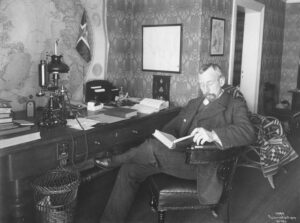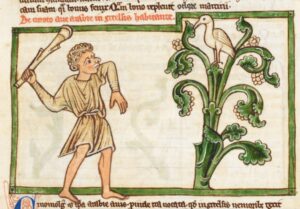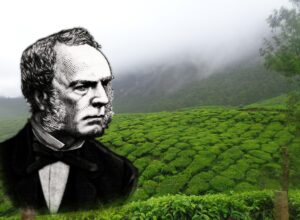“Mrs. Marco Polo of the Americas,” as Harriet Chalmers Adams was known, made a name for herself as one of National Geographic’s most accomplished writers and explorers of the 20th century. She was a self-made, self-taught geographer, anthropologist, and photographer who became an expert on post-colonial South America.
Background
Harriet Chalmers Adams lived an adventurous childhood, getting dirty, swimming, riding horses, and engaging in grueling long-distance hikes. “Before I was 14, I had completed on horseback, the exploration of the entire Sierra Nevada Mountain chain with my father,” she explained in an interview. This set the tone for the rest of her young adult years.
Her father stopped her formal schooling and assigned private tutors instead so she could continue to learn from her experiences on the road. But her life as a traveler truly began in the 1900s after she married electrician Franklin Pierce Adams. With him, she embarked on expeditions to South America that lasted years.
Travels
These expeditions took them through jungles, deserts, high mountain passes, and along ancient rivers. The couple traveled in a variety of ways through every country on the continent, from boat to horseback, for over 64,000km. Because of her unconventional activities, she often wore men’s clothing to make life on the road easier.
News outlets in America caught wind of her travels and wrote that she was the first white woman to pass through some of these extremely remote areas.

Harriet Chalmers Adams holds a baby otter. Photo: Harriet Chalmers Adams
Adams documented the traditions and customs of many South American groups and explored the past and present impact of Spanish colonialism.
According to National Geographic, she was the first woman to travel from the Amazon to French Guyana, as well as climb the El Misti in Peru. She also branched off to Caribbean islands like Trinidad, Cuba, and Haiti and visited Native American reservations in the United States.
While in Haiti, she smuggled a few species of rat to zoos in the United States. She also did a brief stint in Portugal, and traveled through France, Gibraltar, Egypt, Somaliland, Iraq and Sudan, Mongolia, Japan, Hawaii, China, and the Pacific.
Writing career
During her travels, she developed a love of photography and became a pioneer in documenting now-vanished cultures. By the end of her career, she had taken over 3,000 photographs and was in high demand as a lecturer. Often, she packed lecture theaters with audiences of over 1,000. However, much of her fame came from her contributions to National Geographic magazine.

Adams’ photo of traditional fashion in Bolivia. Photo: Harriet Chalmers Adams
She wrote 21 articles for the legendary publication. Her pieces described the geography, languages, history, and even — a rarity in the publication — her own socio-political commentary. For example, she writes, “What blessing has European civilization brought to them, which they did not already enjoy? What have they not suffered in the name of the cross which surmounts the hill?”
She vividly described living with the natives, cheerfully sleeping on dirt floors of huts or in the open, and eating what the locals ate. “In all things, [we] accommodated ourselves to the country customs,” she wrote.
These travels culminated in an offer from the French government to be a war correspondent on the front line during World War I. She wrote for Harper’s magazine about trench warfare, battles, and the new female workforce. She was one of the few to be granted this opportunity.
Despite her accomplishments, The Explorers Club denied her entry and monetary support for her expeditions. They still asked her to lecture at the club and she continued to have a cordial relationship with them.
However, other organizations sought her expertise. She was the third woman to join the Royal Geographic Society. Opportunities to foster community continued to emerge and she established the Woman Geographers Society in 1925.
Her career came to a satisfying close with a peaceful retirement to Nice, France. She died a couple of years before World War II broke out.
Legacy
The media gave her several names: “world’s greatest woman explorer”, “confidant of savage head hunters,” [groan], and “Mrs. Marco Polo of the Americas.”
Some believe that Adams has not received the recognition she deserves because of her gender. Writer Kathryn Davis noted that “her lack of formal education and professional training diminished her credibility, and the absence of book-length publications decreased her sense of permanence.”
Still, thanks to her writings, observations, photographs, and persistence in establishing herself and other women in exploration, the world gained a wealth of knowledge on former European colonies and their ways of life.
John Oliver La Gorce, one of the editors of National Geographic, even called her “the foremost traveler and writer in the United States.”






